The DIY Utopia Hidden in the British Countryside
March 14, 2024Over the hills and far away, there lies a place called Rockaway Park. Here – on a stretch of land somewhere between Glastonbury, Bristol and Bath – the homes are handmade, space is abundant and art is king. “It’s like Disneyland meets Scrapheap Challenge,” a local artist called Bumblepunk tells me.
I’d heard murmurs of this place in the punk community for years, and seen intriguing photos of what looked like an all-year-round festival site. Friends and strangers have often asked me, “Have you been to Rockaway Park yet?” A modern bohemia loved by all who visit, I’m told. There are even rumours that they’ve started their own religion.
I make contact with the park’s chief, Mark Wilson, who invites me to visit the community and see what it’s all about. I get in a taxi from Bristol, driving down A roads, B roads and eventually narrow country roads, flanked by green that winds into the wilderness.
I see a hand painted signpost that reads “Rockaway” and stop the car to get out. A dirt track leads me past battered cars and towering trees. “Welcome Home” is spray-painted on the shell of an old black cab. I pass strange sculptures made of scrap metal and tires – imagine Mad Max on mushrooms – and I hear hip-hop booming from a sound system.
Eventually, I emerge into a huge courtyard abuzz with people, and walled by cabins, shanties and a ramshackle café. Friends stand chatting, kids ride around on bikes and visitors take photos in awe.
A middle-aged man wearing a woolly jumper, drainpipe jeans and muddy boots walks towards me with a big grin and an outstretched hand – it’s Wilson. He immediately shows me the park’s masterpiece-in-progress, a large structure he calls “The Chapel of Unrest”. It’s a half cocoon of corrugated steel with huge windows making up the front wall. Inside, a monolithic “A” for “anarchy” stands 15ft high with a peace symbol hanging in it. A ‘Ceasefire Now’ placard leans against it, with Palestine flags laid out neatly in shrine-like reverence. Crushed beer cans decorate the half-built back wall, oddly beautiful as they glisten in the sunlight.
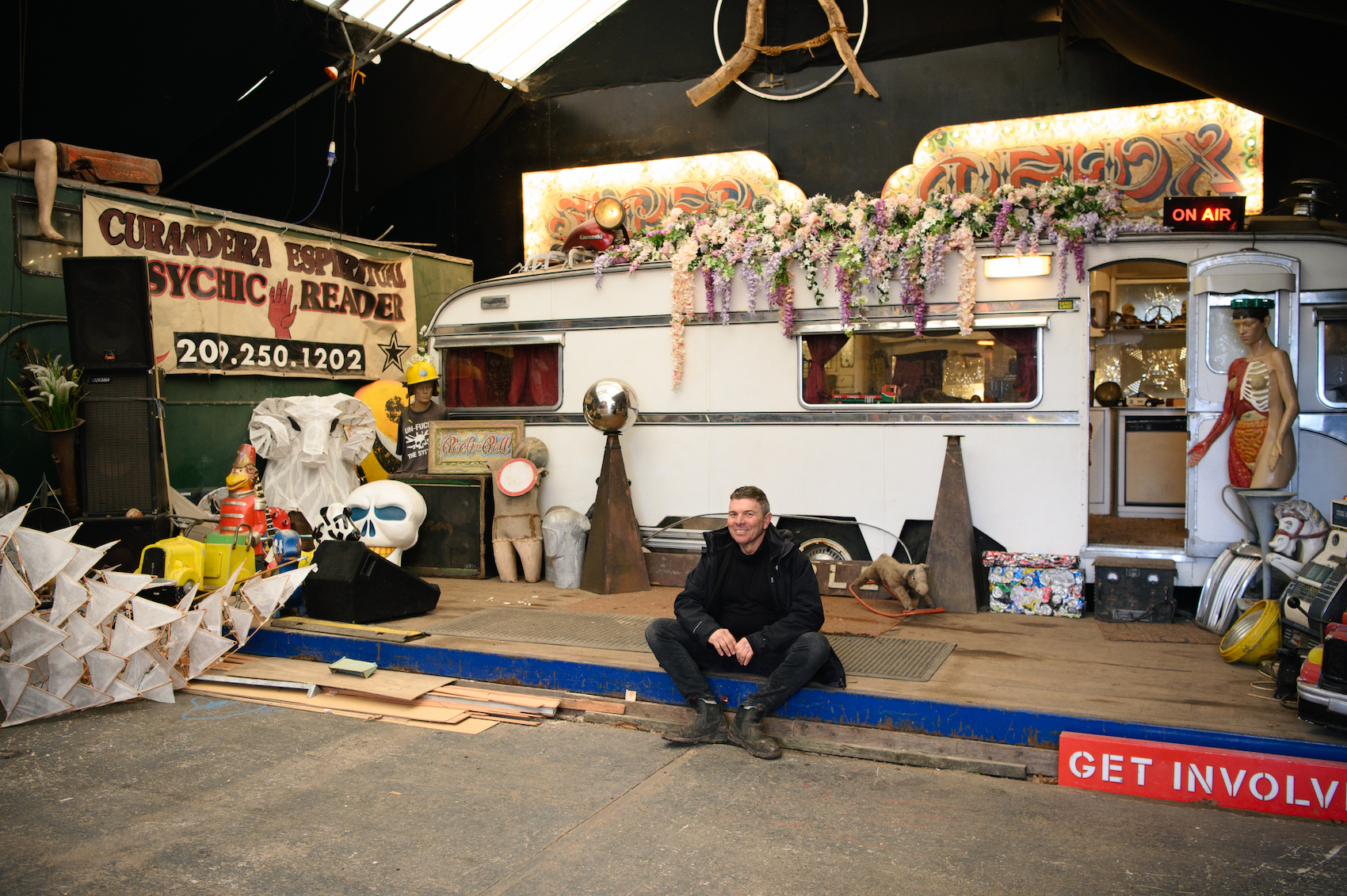
I get closer and see that the “A” is engraved with a quote from anarchist hero and Spanish revolutionary Buenaventura Durruti: “We are going to inherit the earth,” it reads. “There is not the slightest doubt about that. The bourgeoisie may blast and burn its own world before it finally leaves the stage of history. We are not afraid of ruins. We who ploughed the prairies and built the cities can build again, only better next time. We carry a new world, here in our hearts. That world is growing this minute.”
As we wander around the site, Wilson is stopped every few minutes by visitors for a chat. We dive into a converted school bus with “PEACE” emblazoned across its windscreen. “I left art school to join a punk band [The Mob]. I always knew I was a creative individual who likes making stuff,” he tells me. “I had the idea that this could be a beautiful, creative space. It’s got this unnatural beauty because it used to be a quarry, and then it was a scrapyard.”
Originally from Yeovil, Somerset, Wilson bought this place as a scrapyard back in 2001 to fix up tour vans for bands and drivers he knew. But his scrapyard business went bankrupt in 2011. On the brink of losing the yard, he borrowed money from a mate and managed to keep the land, before deciding to turn it into something more ambitious, with activism, art and community as the driving force.
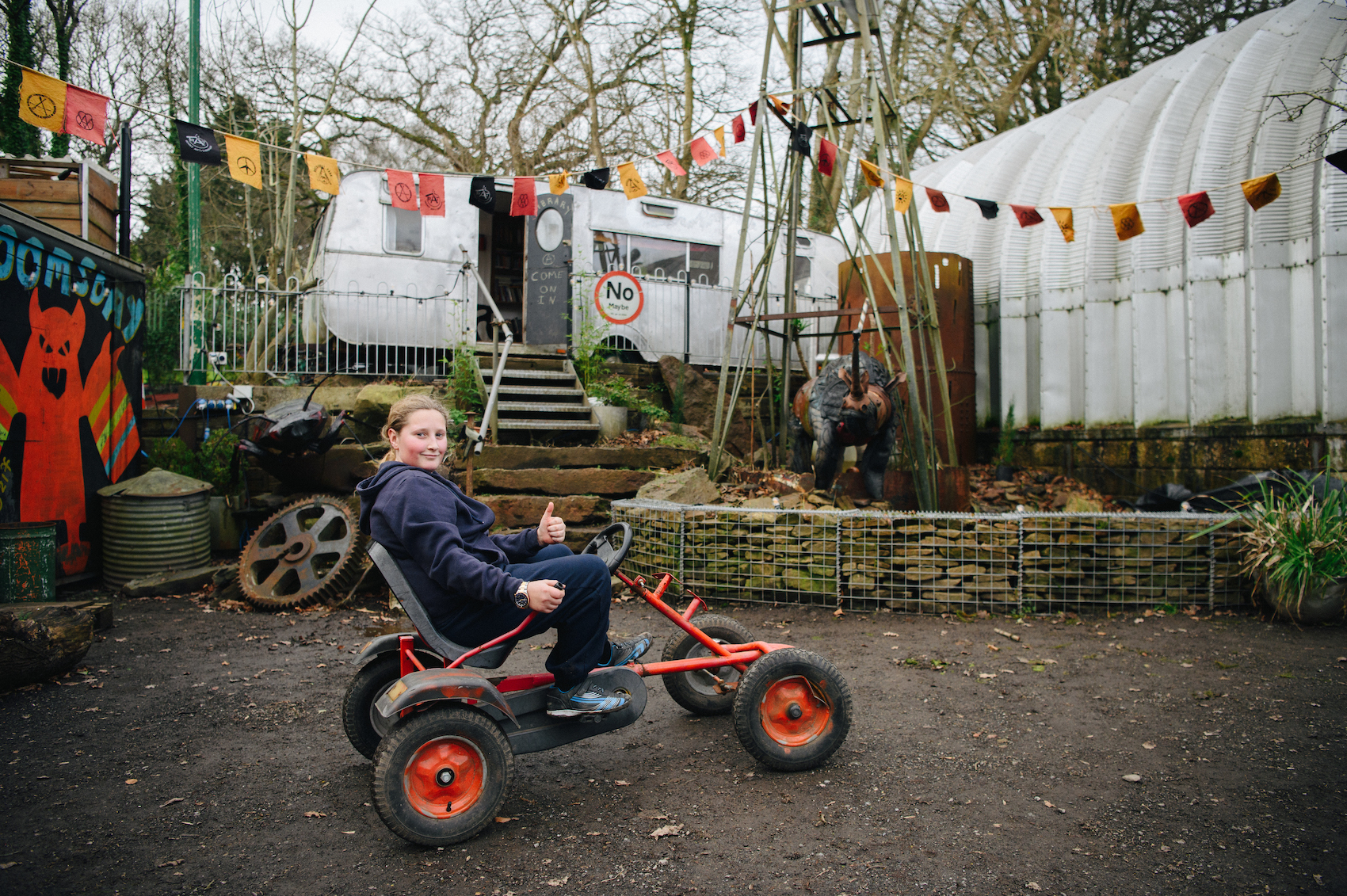
Today, Rockaway Park is a sprawling, five-acre community and art space with 30 residents and thousands of visitors every year. It boasts a music venue, an anarchist library, a drop-in mental health clinic, film screenings, a forest school for children, screen printing sessions and weekly yoga classes. On top of that, there are 30 artist workshop spaces inhabited by welders, graffiti artists, glassblowers, sculptors and carpenters.
All the major building decisions at Rockaway come from – or have to go through – Wilson, and he makes money for the upkeep from rent donations, sales from the café and bar, and from events and workshops. He also gets revenue from allowing the space to be used to build and store art sculptures that go on to appear at Glastonbury, Shambala and other festivals. Around the park, mechanical beasts – made by Glasto favourite Joe Rush and his eccentric performance art troupe the Mutoid Waste Company – loom like gargoyles.
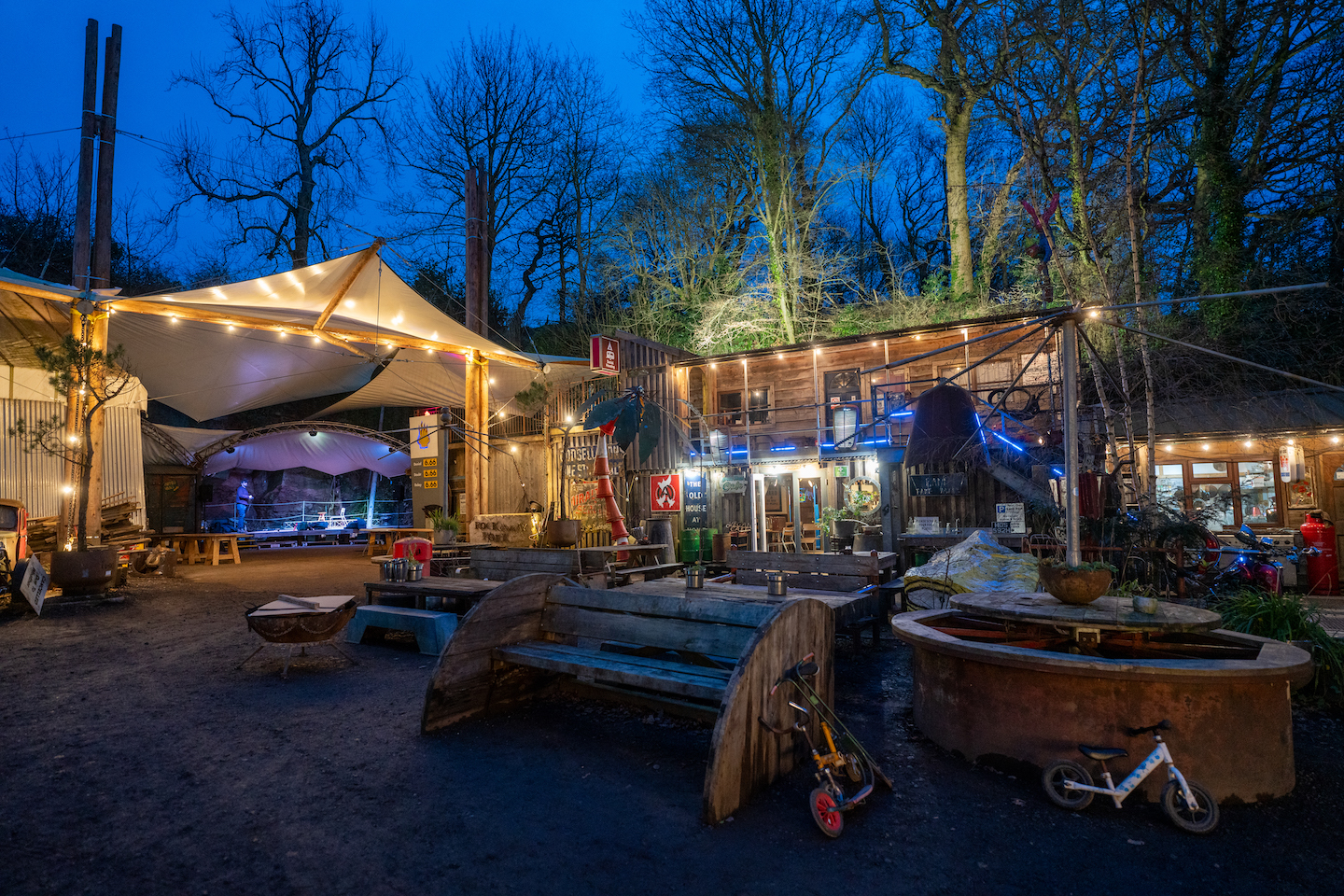
The first artist to rent a studio space here was Bristol street artist Rowdy, back in 2015. “It's really important to have accessible space,” he says. “Here, we’ve got a 24/7 gallery and studio space, and we don’t have to go through any institutions.”
A rickety spiral staircase leads to his studio, which sits above a dusty car garage overlooking the tin rooftops of the park. Rowdy, who lives as well as works at Rockaway Park, is known for his 50ft long caricature crocodiles that can be seen on buildings across Somerset, Bristol and beyond.
Up another staircase on a wooden deck, I find a room overlooking the site where Sarah Lewis runs a mental health drop-in centre once a month for children and young people up to the age of 19. Lewis left the NHS two years ago to “challenge the system” and set up a service called Normal Magic.
“It’s free, anonymous and off-grid, which is really important,” she tells me. “We've been in GP surgeries for over a year now in West Devon. We offer a no threshold, no referral, no open or closed service for those surgeries. If you ring up your doctor because you've hurt your foot, there's no other information that's normally needed; we’re trying to do that for people who might have a mental health problem, or are worried about something.”
She adds: “We trust you to know what you need.”
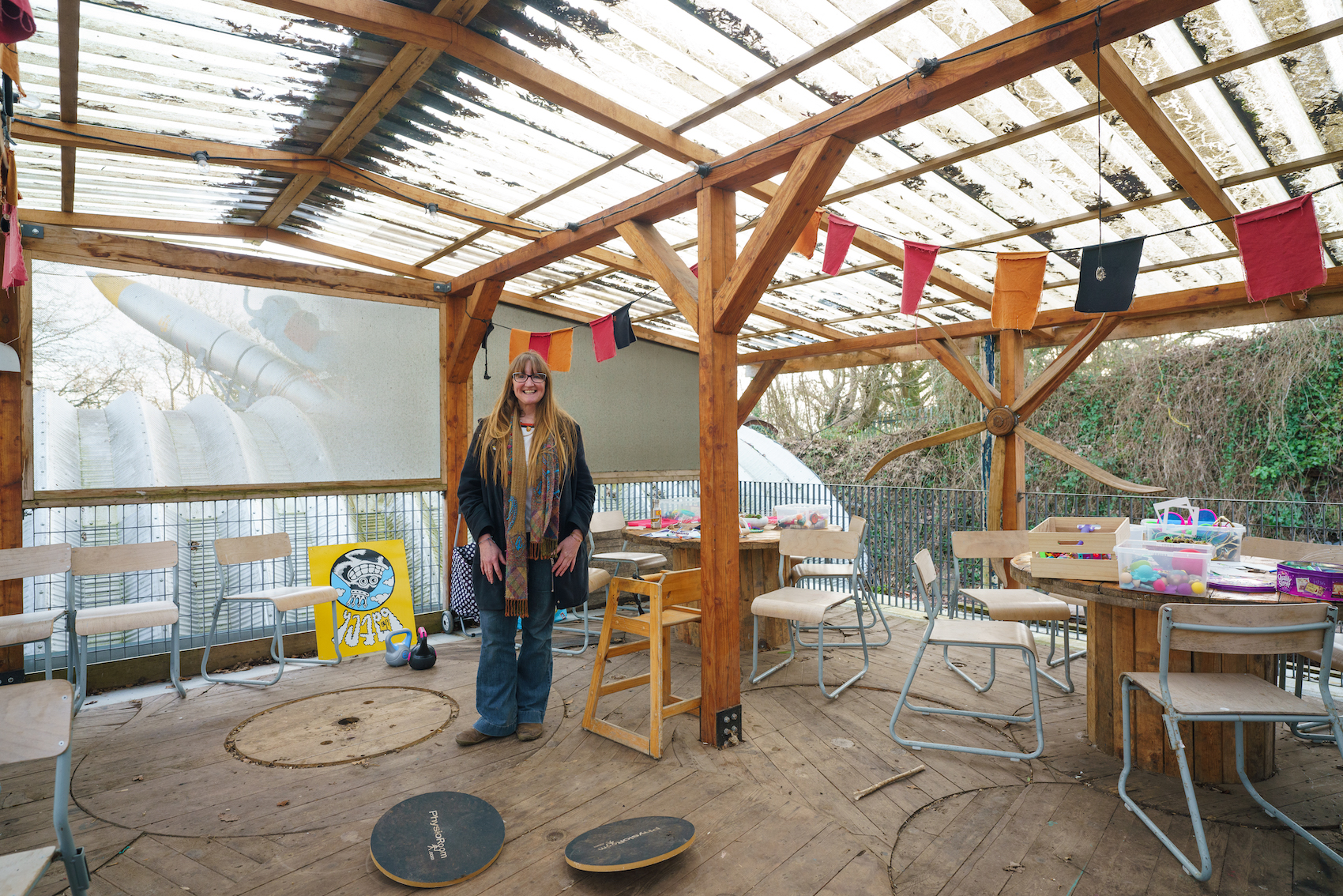
Lewis believes that what she’s doing at Rockaway Park, and with Normal Magic, is part of a growing movement across the country. “We left the NHS because it's too big a machine and is too stuck in its way of working to influence change. I think services and groups with similar agendas to ours are growing outside of the bigger system now because the bigger system won’t move as quickly as we can as individuals and as communities.”
The ethos and feel of Rockaway Park echoes the new age traveller sites you might have found in rural England in the 1980s. In fact, many of the residents here spent their formative years as part of the traveller and free festival movements, famous for their convoys and communes.
Joe, who chose not to give his surname for privacy reasons, is a musician in a hardcore punk band called Disciple BC, and has lived this way for decades, raising his kids on the road throughout the 80s and 90s. He now lives at Rockaway Park, residing in a reworked bus.
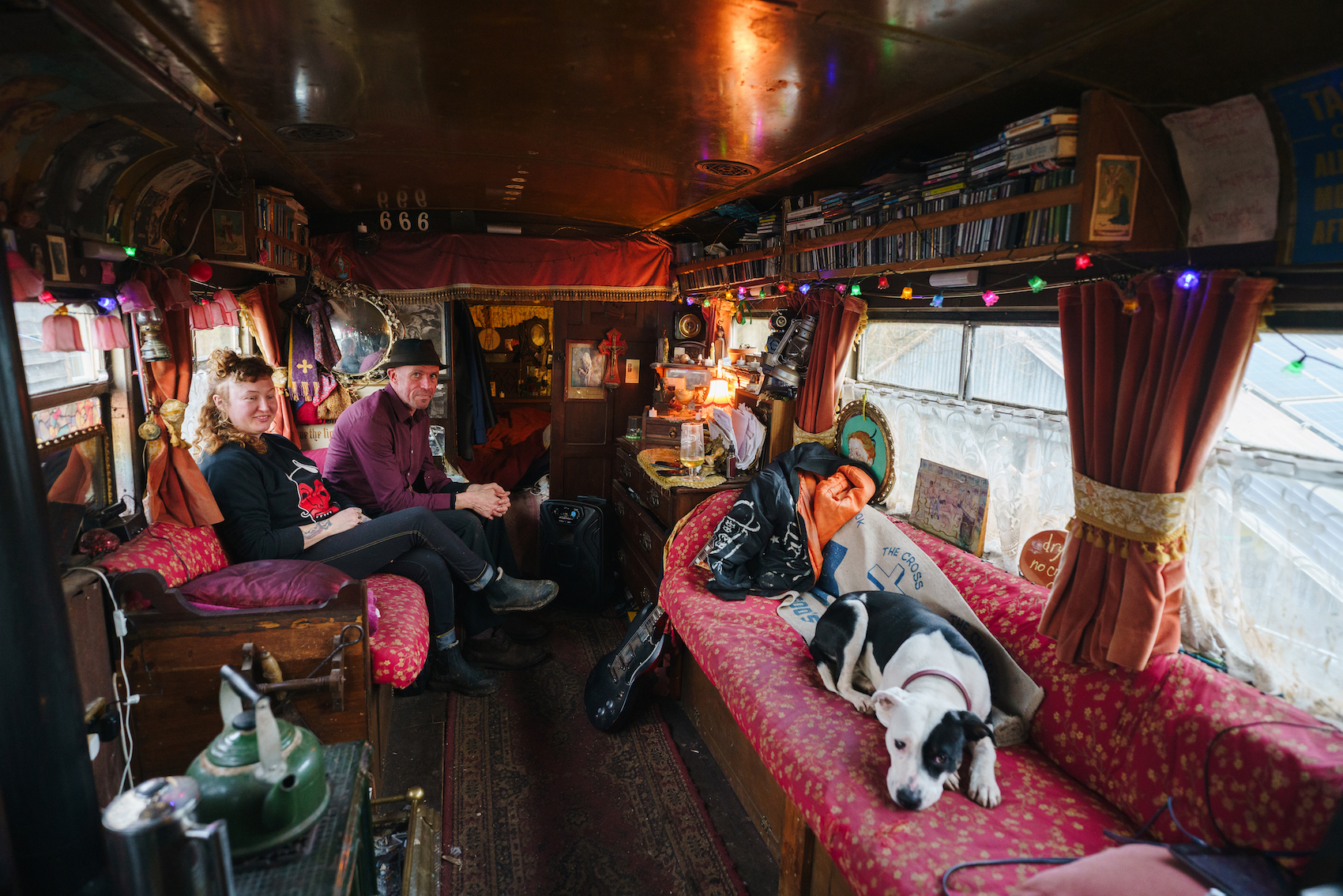
“I grew up in Jersey. I ran away from there when I was 18, otherwise I was going to get sent back to a young offenders’ place,” he tells me. “I ended up meeting a load of travellers just by total chance. They basically looked after me. I was just sniffing glue and being really crazy and sort of self-destructive. These hippie types got me listening to Hawkwind and smoking a bit of pot, and they told me, ‘You need to calm down, otherwise you're going to fucking die.’”
His small home is filled with records, CDs, cassettes and instruments – by The The, Dawn Ray’d, Tragedy and Kate Bush, to name a handful – and there’s a Hawkwind poster on the wall. “There’s a freedom here,” he says. “You’re around likeminded people, and it’s a caring community, really. People look out for each other.”
As for the religion supposedly taking root here, Wilson laughs it off. They were originally building the chapel for events, but the authorities found out and tried to hit them with business rates. Remembering that they’d recently hosted a wedding ceremony there, Wilson thought on his feet and declared that the building was indeed a church and that Rockaway Park had its own religion, therefore exempting them from needing to pay business tax.
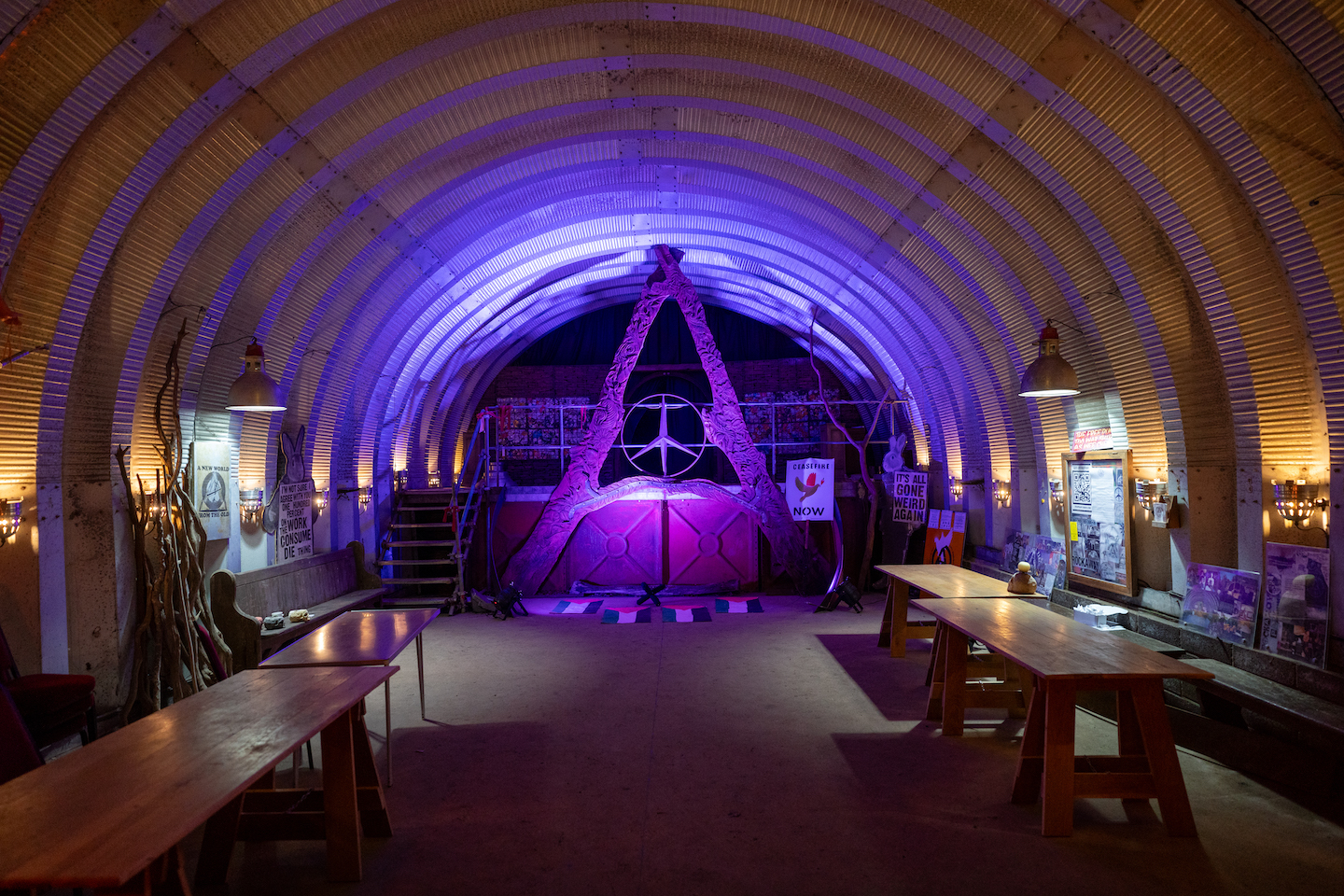
It spawned a campaign to get 60,000 people to join The Chapel of Unrest (AKA The Congregation of Agitation) religion. Wilson says he was told by someone that this amount of followers would classify it as a nationally recognised religion, but VICE haven’t been able to verify that claim. Either way, he’s asked for a £10 donation from each new member, which will be used to complete the chapel.
The building will be an homage to protest and a hub for organising. In his words: “[It will be] a monument, a movement… that stands for the disenfranchised, the visionaries, the dreamers and misfits.” Currently at 1,800 members, its devotees include Henry Rollins from Black Flag, Penny Rimbaud from Crass and comedian Nish Kumar.
“Why stop at 60,000? We’re going for 600,000!” says Wilson. “The way I see it, we’re building a huge network of people who give a shit. We all have different skills. Instead of us all working alone, in our own disciplines, thinking we can’t do anything, we can come together and share our skills.”
His eyes light up as he talks, and he gets more animated by the second. “There could be this massive, broad range of skills and a network that could counteract the status quo, you know?” says Wilson, who even became a member of the local parish council recently. “I’ve always been attracted the politics of punk,” he explains. “Changing the world and making a difference. That’s what I’m trying to do with this place.”
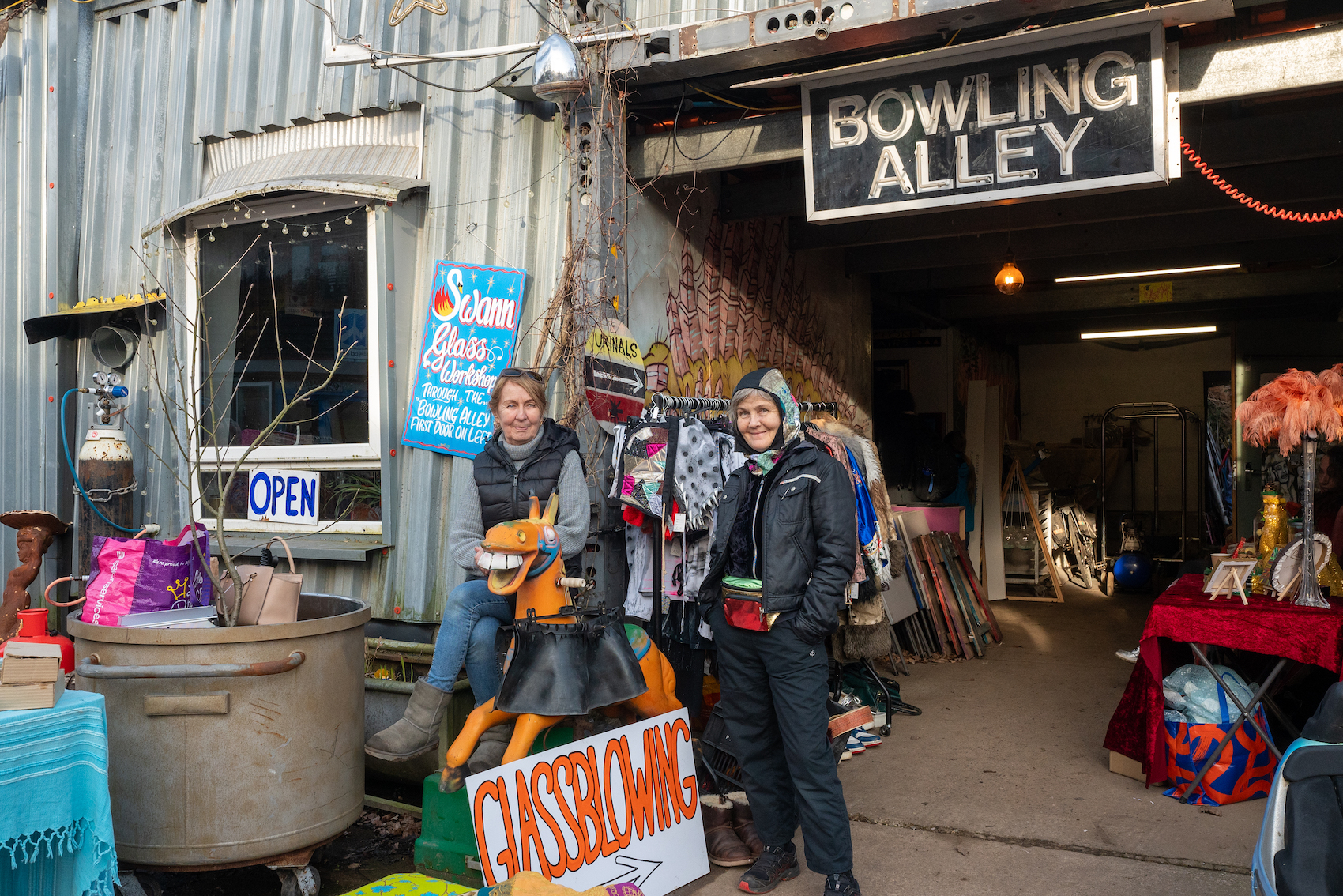
Despite being situated just three miles from the home of the region’s MP, Jacob Rees-Mogg, Wilson says they’ve never got planning permission for anything they’ve built. “We just get on with it – I’d rather ask for forgiveness later, than permission before,” he says.
This devil-may-care approach just adds to his magnetic charisma, and makes him hard to dislike. In the afternoon he takes me to his self-built house for a cup of tea. It has homemade wooden doors carved with care and a tropical conservatory full of towering cacti and massive aloe vera plants. The huge kitchen doubles up as a counterculture museum of ephemera and artworks made by everyone from Banksy to Vivienne Westwood. A wall of windows overlooks a verdant valley below. It’s more like something you’d see on Grand Designs than at a protest camp.
His youngest daughter, Rosie-Lee Wilson, lives next door in a bespoke bungalow with her partner Penny, who works as a postal worker in a nearby village. She’s an artist and graphic designer who moved back here two years ago after almost a decade in London. Carhartt and Champion are among her clients, but she came here to reconnect with the community roots around which she was raised.
“[Rockaway Park] is a third space. It's a space that you can be in without spending any money. It's a space where you won't be judged,” she says. “You can rock up here any time. We have a loneliness epidemic right now because we have a chronic lack of spaces.”
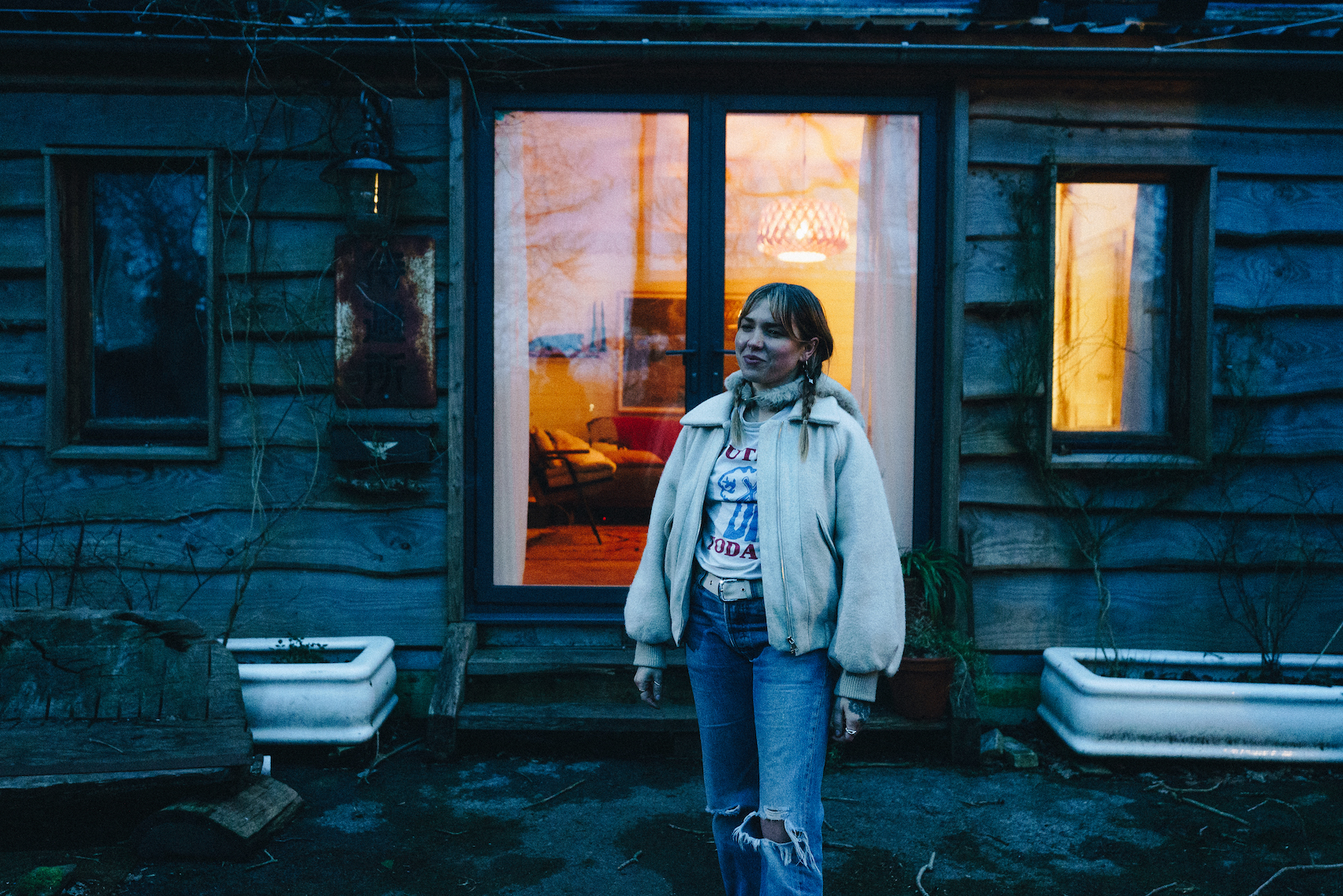
Her living room is warm, wooden and homely, with a whippet sleeping on the couch. I ask how her artistic life has changed since living here. “Just having the space and money to be able to make work is the big thing, isn't it? Because when you're in London, it's pretty hard.”
In a secular society, Rosie tells me, places like Rockaway Park are important to provide what religious communities do elsewhere. “Why do we love festivals so much? Because we actually just like being in communion. We like singing together. We like going on pilgrimages to these places. That's how I see this place.”
Joe echoes her thoughts: “It’s that thing of having a community and having people around you who you can talk to and they'll help you out. I think I'd be pretty fucked if I lived in town, to be honest. I wouldn’t last very long!”
This place doesn’t just attract anarcho-punks and eccentrics. Among the visitors I see today, there are local families, conservative neighbours and young professionals in Patagonia jackets and New Balance trainers. “If we're going to change the world, we need everybody working on it,” says Wilson. “You need the support of your grandma and your grandchildren, you know?”
There’s an 11-year-old, he tells me, who regularly comes to sit in the anarchist library to do her homework as her parents catch up with friends onsite. “I’m impressed by how radical normal people are these days. It’s not just the people with spikey hair and leather jackets!” He goes on to say that their main demographic of followers online is women between the ages of 35 and 65.
Part of Rockaway Park’s magic is its geography. The subcultural spirit of nearby Bristol and Bath coalesce here with the Isle of Avalon and the mythos of Glastonbury. It feels intimately remote – upon visiting, you simultaneously want to tell everyone you know about it, while somehow keeping it a secret. It’s a community enriched by visitors, not diluted; made to be shared, exhibited, enjoyed and learned from, in the hope that ideas here are taken back into the everyday lives of the visitors, like pollen on a fleece jacket.
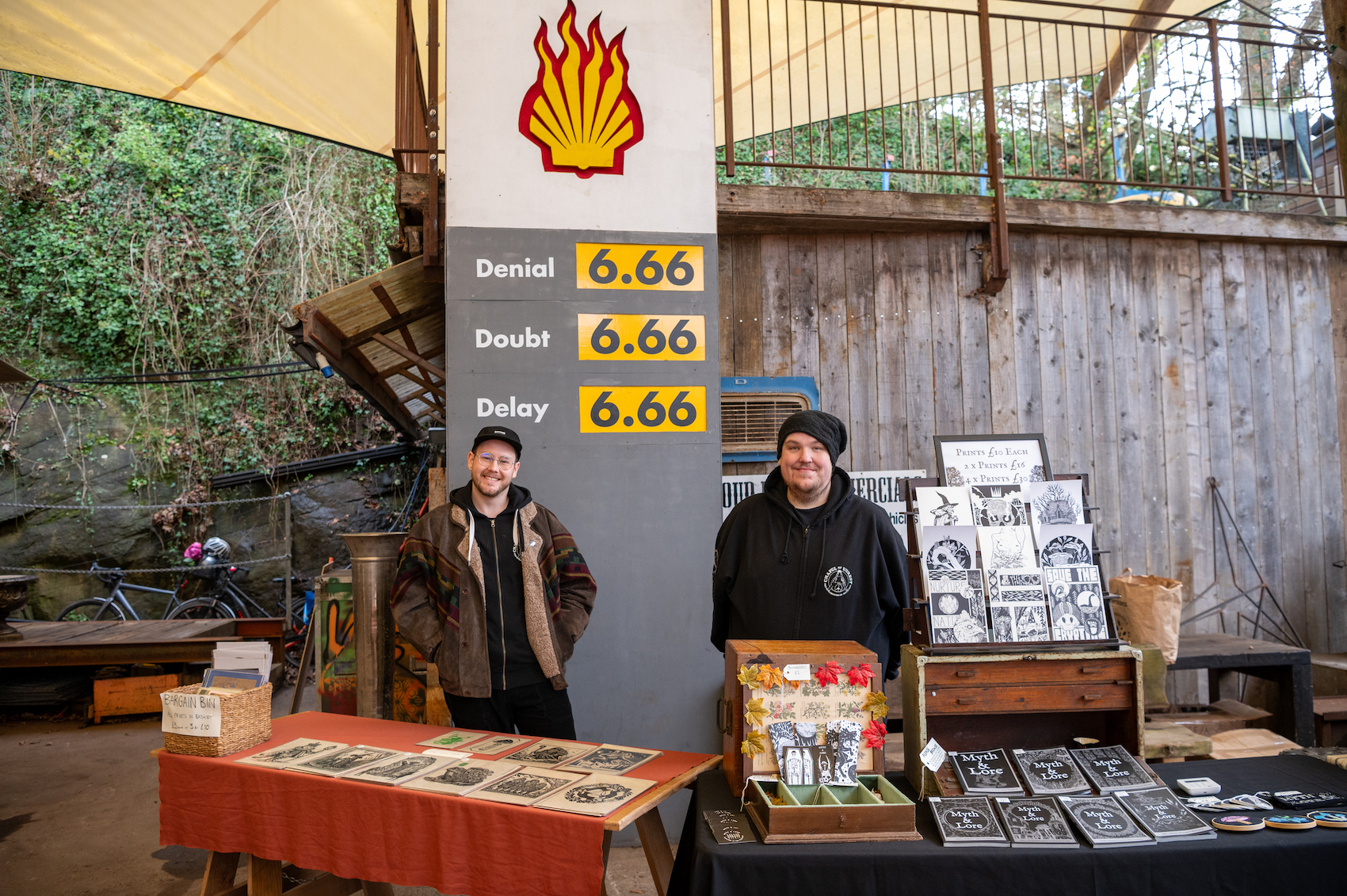
“Back [in the 80s and 90s] you’d find somewhere to stay and you'd basically try and hide,” Joe remembers. “Here, we’re hiding in plain sight. We had fucking Bath and North Somerset Council come down. They just think it’s a cool arty space!” Rowdy echoes these thoughts, “I think maybe society has grown to realise that we’ve got a terrible housing situation, so we have to have some alternatives. And if we're building them ourselves and we're not relying on the taxpayer or the local council for anything, then we're not really harming or hurting anyone.”
Before I leave, I stop by the community’s Sunday market to speak to some of the vendors. Two years ago, Mark and his wife Ellie – who have chosen to only use their first names for privacy reasons – came here to sell their zines and, after a few visits, the opportunity arose for them to take over running the markets. “We fell in love with the place,” Mark tells me at his stall. “At the time I was dealing with a big mental health break. I wasn't going out, I wasn’t really talking to people. This became very important to me. I found a group of people that just took me for who I was. From there, we’ve become more and more involved.”
The zine that Mark and Ellie run is called Myth & Lore and is dedicated to, you guessed it, mythology and folklore. I wonder if there is something almost folkloric about Rockaway Park. A story that will be passed on over time: the tale of a strange and charismatic man who started a religion for a laugh and built an artist community in a junkyard.
The sun begins to set and I say my goodbyes and walk back down the dirt track. Before I leave, I check in with Wilson. “People always say to me that they wouldn’t get away with what we do here in Brighton, or London, Manchester, or up north… Well, you wouldn’t get away with it here unless we just fucking did it! What’s the worst that could happen? You go to jail, read a few books… then come back out and start again.”
